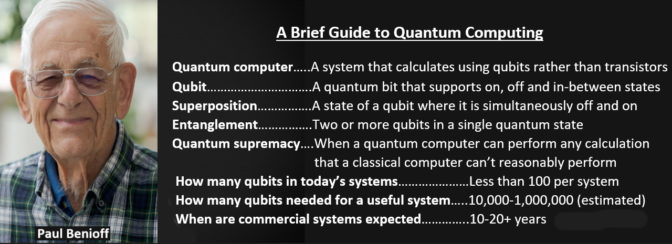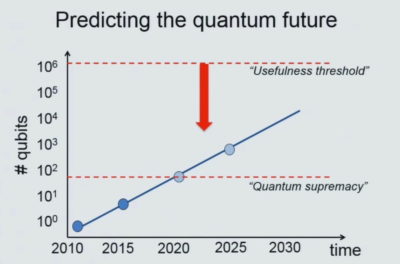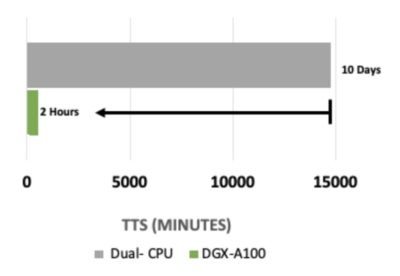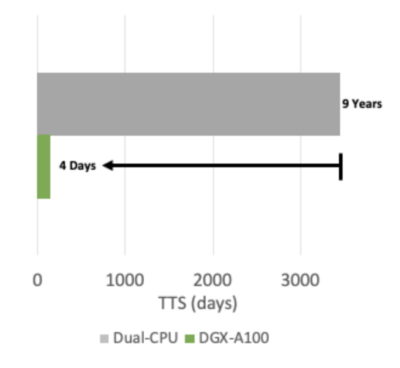Twenty-seven years before Steve Jobs unveiled a computer you could put in your pocket, physicist Paul Benioff published a paper showing it was theoretically possible to build a much more powerful system you could hide in a thimble — a quantum computer.
Named for the subatomic physics it aimed to harness, the concept Benioff described in 1980 still fuels research today, including efforts to build the next big thing in computing: a system that could make a PC look in some ways quaint as an abacus.
Richard Feynman — a Nobel Prize winner whose wit-laced lectures brought physics to a broad audience — helped establish the field, sketching out how such systems could simulate quirky quantum phenomena more efficiently than traditional computers.
So, What Is Quantum Computing?
Quantum computing uses the physics that governs subatomic particles to perform sophisticated parallel calculations, replacing more simplistic transistors in today’s computers.
Quantum computers calculate using qubits, computing units that can be on, off or any value between, instead of the bits in traditional computers that are either on or off, one or zero. The qubit’s ability to live in the in-between state — called superposition — adds a powerful capability to the computing equation, making quantum computers superior for some kinds of math.
 What Does a Quantum Computer Do?
What Does a Quantum Computer Do?
Using qubits, quantum computers could buzz through calculations that would take classical computers a loooong time — if they could even finish them.
For example, today’s computers use eight bits to represent any number between 0 and 255. Thanks to features like superposition, a quantum computer can use eight qubits to represent every number between 0 and 255, simultaneously.
It’s a feature like parallelism in computing: All possibilities are computed at once rather than sequentially, providing tremendous speedups.
So, while a classical computer steps through long division calculations one at a time to factor a humongous number, a quantum computer can get the answer in a single step. Boom!
That means quantum computers could reshape whole fields, like cryptography, that are based on factoring what are today impossibly large numbers.
A Big Role for Tiny Simulations
That could be just the start. Some experts believe quantum computers will bust through limits that now hinder simulations in chemistry, materials science and anything involving worlds built on the nano-sized bricks of quantum mechanics.
Quantum computers could even extend the life of semiconductors by helping engineers create more refined simulations of the quantum effects they’re starting to find in today’s smallest transistors.
Indeed, experts say quantum computers ultimately won’t replace classical computers, they’ll complement them. And some predict quantum computers will be used as accelerators much as GPUs accelerate today’s computers.
How Does Quantum Computing Work?
Don’t expect to build your own quantum computer like a DIY PC with parts scavenged from discount bins at the local electronics shop.
The handful of systems operating today typically require refrigeration that creates working environments just north of absolute zero. They need that computing arctic to handle the fragile quantum states that power these systems.
In a sign of how hard constructing a quantum computer can be, one prototype suspends an atom between two lasers to create a qubit. Try that in your home workshop!
Quantum computing takes nano-Herculean muscles to create something called entanglement. That’s when two or more qubits exist in a single quantum state, a condition sometimes measured by electromagnetic waves just a millimeter wide.
Crank up that wave with a hair too much energy and you lose entanglement or superposition, or both. The result is a noisy state called decoherence, the equivalent in quantum computing of the blue screen of death.
What’s the Status of Quantum Computers?
A handful of companies such as Alibaba, Google, Honeywell, IBM, IonQ and Xanadu operate early versions of quantum computers today.
Today they provide tens of qubits. But qubits can be noisy, making them sometimes unreliable. To tackle real-world problems reliably, systems need tens or hundreds of thousands of qubits.
Experts believe it could be a couple decades before we get to a high-fidelity era when quantum computers are truly useful.

Predictions of when we reach so-called quantum computing supremacy — the time when quantum computers execute tasks classical ones can’t — is a matter of lively debate in the industry.
Accelerating Quantum Circuit Simulations Today
The good news is the world of AI and machine learning put a spotlight on accelerators like GPUs, which can perform many of the types of operations quantum computers would calculate with qubits.
So, classical computers are already finding ways to host quantum simulations with GPUs today. For example, NVIDIA ran a leading-edge quantum simulation on Selene, our in-house AI supercomputer.
NVIDIA announced in the GTC keynote the cuQuantum SDK to speed quantum circuit simulations running on GPUs. Early work suggests cuQuantum will be able to deliver orders of magnitude speedups.
The SDK takes an agnostic approach, providing a choice of tools users can pick to best fit their approach. For example, the state vector method provides high-fidelity results, but its memory requirements grow exponentially with the number of qubits.
That creates a practical limit of roughly 50 qubits on today’s largest classical supercomputers. Nevertheless we’ve seen great results (below) using cuQuantum to accelerate quantum circuit simulations that use this method.

Researchers from the Jülich Supercomputing Centre will provide a deep dive on their work with the state vector method in session E31941 at GTC (free with registration).
A newer approach, tensor network simulations, use less memory and more computation to perform similar work.
Using this method, NVIDIA and Caltech accelerated a state-of-the-art quantum circuit simulator with cuQuantum running on NVIDIA A100 Tensor Core GPUs. It generated a sample from a full-circuit simulation of the Google Sycamore circuit in 9.3 minutes on Selene, a task that 18 months ago experts thought would take days using millions of CPU cores.

“Using the Cotengra/Quimb packages, NVIDIA’s newly announced cuQuantum SDK, and the Selene supercomputer, we’ve generated a sample of the Sycamore quantum circuit at depth m=20 in record time — less than 10 minutes,” said Johnnie Gray, a research scientist at Caltech.
“This sets the benchmark for quantum circuit simulation performance and will help advance the field of quantum computing by improving our ability to verify the behavior of quantum circuits,” said Garnet Chan, a chemistry professor at Caltech whose lab hosted the work.
NVIDIA expects the performance gains and ease of use of cuQuantum will make it a foundational element in every quantum computing framework and simulator at the cutting edge of this research.
Sign up to show early interest in cuQuantum here.
The post What Is Quantum Computing? appeared first on The Official NVIDIA Blog.
